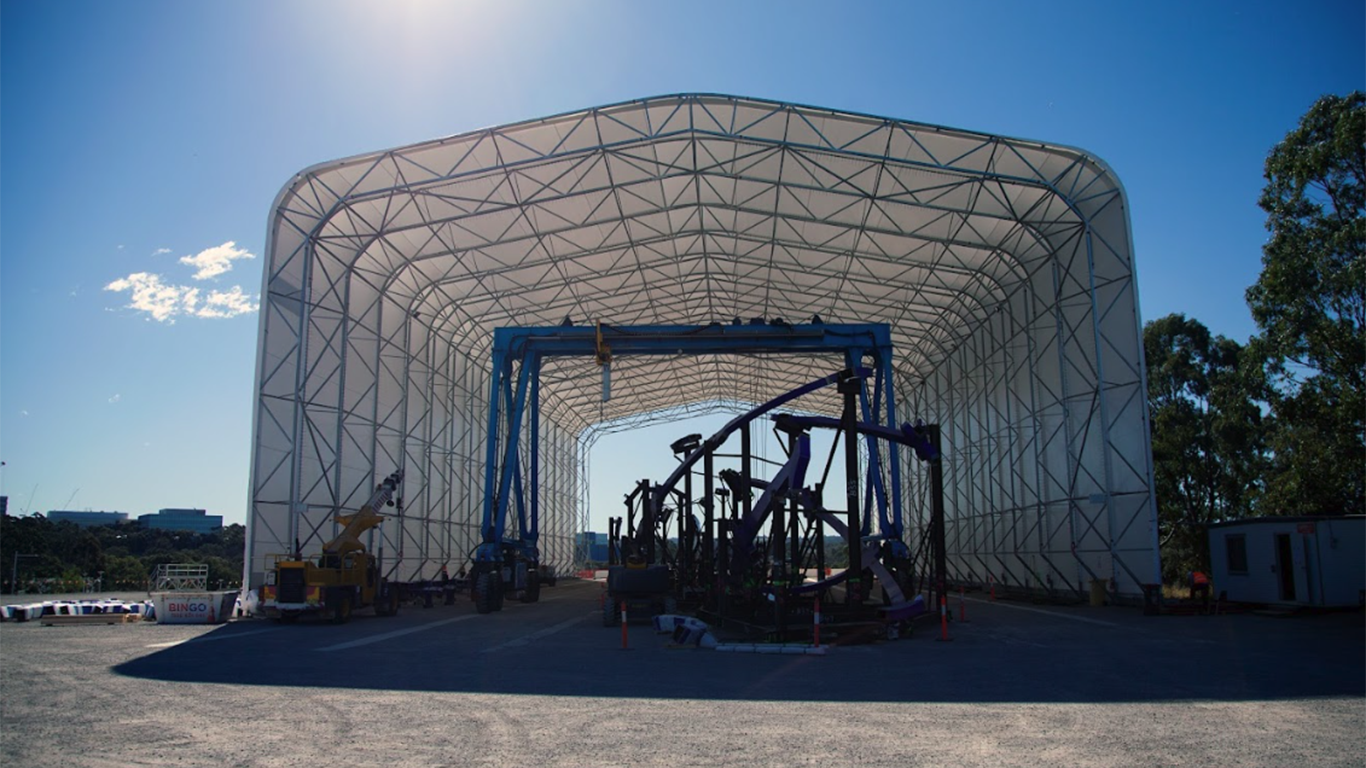Protecting your operations, assets, and workforce from the elements is crucial in the industrial world. The key to achieving this is investing in high-quality, durable shelters. But how do you gauge the quality and durability of a shelter? Here’s what to look for.
Portable Shelters vs. Container Shelters
Portable shelters are designed with mobility in mind. Their lightweight yet durable construction makes them easy to install, dismantle, and transport, offering a convenient solution for operations with frequently changing locations or short-term project sites. They provide on-the-spot protection from the elements for both personnel and equipment.
Portable shelters are ideal for situations such as construction projects, field operations, or temporary storage, especially when flexibility and speed are paramount. Their quick assembly and disassembly allow them to be reused at different sites, providing a versatile and cost-effective solution.
Container shelters, on the other hand, are typically more extensive and more permanent structures, offering robust protection. These shelters are often mounted between two shipping containers, which serve as sturdy bases and offer additional secure storage space.
Ideal for mining, heavy machinery operations, or long-term storage requirements, container shelters are designed to withstand various weather conditions and provide high security. Their durable materials and robust construction make them reliable for long-term, weather-resistant shelter solutions.
When selecting a shelter for your industrial operation, it’s essential to consider the particular needs of your project, including factors like the permanence of the site, available space, level of protection needed, and the intended use of the shelter. Whether it’s a portable shelter’s flexibility or a container shelter’s robustness, a solution is available to meet your unique needs.
Good design enhances a shelter’s longevity. Elements like aerodynamic shape, reinforced stress points, and proper ventilation all contribute to a shelter’s durability.
Material Strength and Durability
The maxim ‘you are what you’re made of’ holds in industrial shelters. High-quality shelters prioritize using superior, rugged materials that can stand up to the test of time and elements. Some shelters are designed to be UV-stabilized, with fabric covers and steel frames with superior resistance to corrosion and wear. These high-grade materials ensure your shelter remains resilient and functional, offering consistent protection to your assets and workforce.
Weather Resistance
Industrial shelters must hold their ground against the onslaught of varying weather conditions – beating the sun, lashing rains, howling winds or biting cold. As such, your shelter should be designed and built to offer excellent weather resistance. Container shelters undergo rigorous testing for extreme weather conditions, ensuring they stay strong and functional, providing unyielding protection against nature’s whims.
Design Quality
The quality of a shelter isn’t just skin-deep; it’s also about what’s underneath – the design. An aerodynamic shape can help the shelter withstand strong winds, while reinforced stress points add to the structure’s overall durability. Also, proper ventilation is crucial to prevent condensation buildup that could compromise the integrity of the shelter over time. At Allshelter, we incorporate these design considerations into our shelters, ensuring optimal performance and longevity.
Customizability
The ‘one-size-fits-all’ approach doesn’t cut it for industrial shelters. Each industrial site has unique needs and challenges, and the ability to customize your shelter to suit them enhances its usefulness and lifespan. Custom shelter solutions can be tailored to fit your specific requirements, ensuring proper protection.
Ease of Maintenance
A high-quality shelter isn’t just built to last; it’s also designed to be easy to maintain. This involves simple cleaning procedures, readily available replacement parts, and responsive support for maintenance queries. Comprehensive maintenance guidelines help ensure your shelter stays in top condition and effectively serves you for years.
Safety Features
Durability and safety go hand in hand when it comes to industrial shelters. From fire retardancy to wind-rated designs and secure anchoring systems, safety features protect your personnel and assets and contribute to the shelter’s overall longevity. At Allshelter, they prioritize safety. Each shelter structure has integrated safety features to meet or exceed industry safety standards.
Sustainability
Quality and sustainability are close allies. High-quality shelters are designed considering the environment, utilizing energy-efficient designs and sustainable materials, and built to last, thus reducing waste. At Allshelter, we’re committed to creating sustainable shelter solutions, reflecting our respect for the environment in our design and manufacturing processes.
A high-quality industrial shelter is a synergy of durable materials, weather-resistant design, customizability, ease of maintenance, essential safety features, and sustainable practices.
Final Thoughts
In choosing between portable and container shelters, you should consider factors such as the permanence of your site, the space available, the protection needed, and the intended use.




